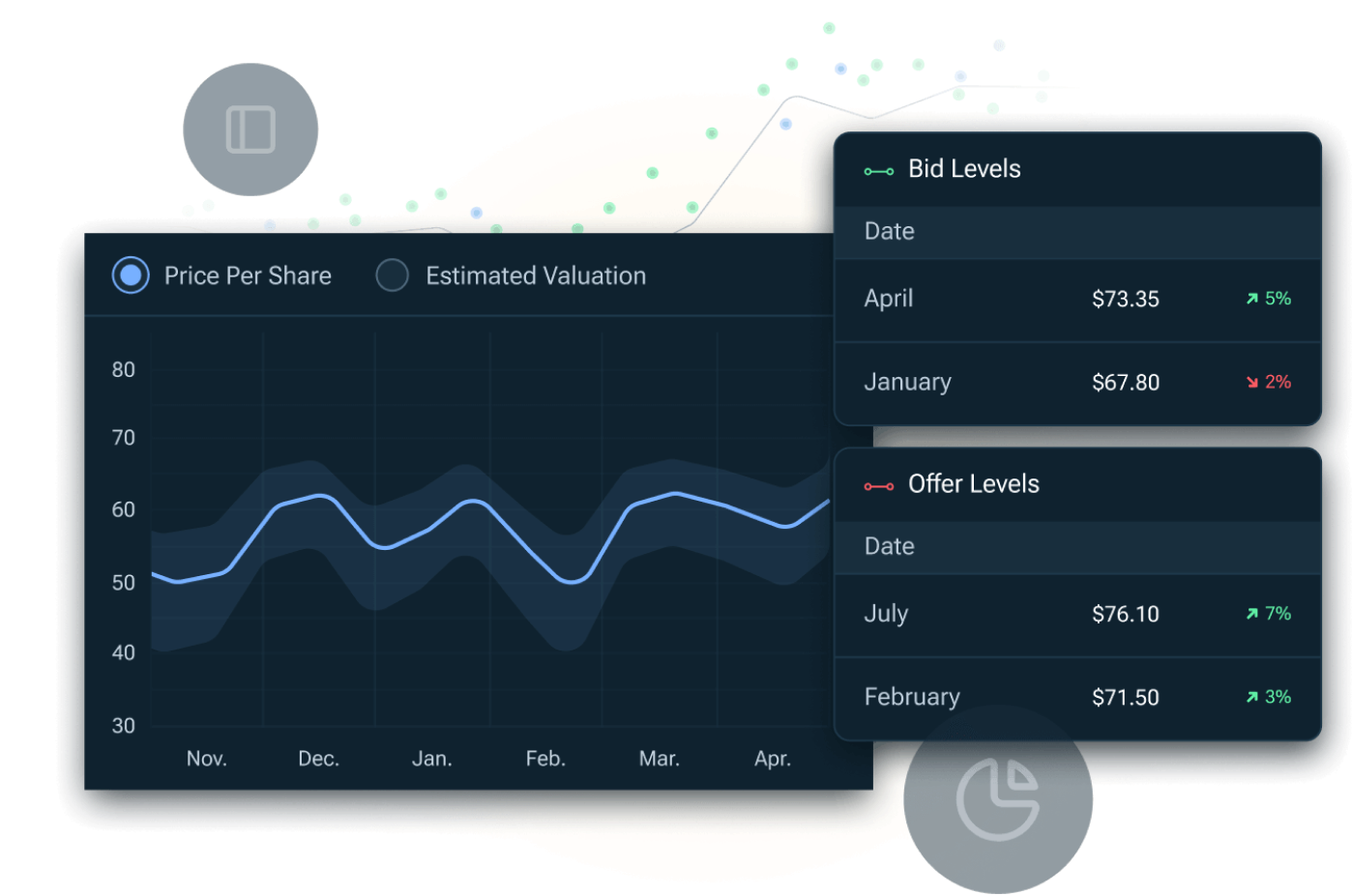
Overview Energy Stock
Overview Energy powers innovation in aerospace by designing and building deployable systems that enable efficient, precision manufacturing in space environments. It reimagines how aerospace energy systems are created with advanced manufacturing methods that serve the aviation and satellite sectors.
Sign up for SecondMarket® to view the market and buy or sell Overview Energy Stock
Buy + SellSee Overview Energy Valuations + Financials

*Sample data + company shown for illustrative purposes only
Gain insights Into Overview Energy Stock Valuation + Share Prices
View real-time Tape D® data on Overview Energy stock including most recent valuation and historical share price information.
Are you an institutional investor or employee shareholder? Sign up to the SecondMarket trading platform.
Get Started
Overview Energy Management Team
-
Board Member
Anton Brevde
-
Board Member
Vinny Beranek
-
Co-Founder, CEO
Marc Berte
-
Co-Founder, Chief Strategy Officer
Andrew Cantino
Learn More About Overview Energy Stock
Buy Overview Energy Stock
01Overview Energy stock does not trade on public stock exchanges. Overview Energy stock is considered a private security and you need to be an accredited investor to trade shares. To invest in Overview Energy stock you can either buy shares directly through the company or work with a secondary trading marketplace like Nasdaq Private Market.
Learn more about the secondary market for private company shares on the investors page.
Sell Overview Energy Stock
02Overview Energy Stock does not trade on public stock exchanges. In order to sell Overview Energy shares you need to work directly with the company or with a secondary trading marketplace like Nasdaq Private Market. NPM has more than a decade of experience helping sell shares on the private market to our network of institutional investors.
Learn more about NPM services for selling privately held stock on the Employee Shareholders page.
Read more about how to sell private company stock on the private secondary market:
Overview Energy Stock Price
03Overview Energy does not have a publicly available stock price because it is privately held and not traded on public stock exchanges. Through the Tape D™ database from Nasdaq Private Market, you can view Overview Energy share price and other valuable private market data.
Read more about secondary market private company stock prices:
Overview Energy Stock Ticker Symbol
04There is no ticker symbol for Overview Energy stock because it is a private company. Private companies do not have ticker symbols like public companies, they are identified primarily by using the company ‘street’ name or legal name.
Criteria to Sell Overview Energy Stock
05Nasdaq Private Market currently works with employees, ex-employees, and other company investors. In order to sell Overview Energy stock you need to receive the company’s approval, which Nasdaq Private Market manages on your behalf.
Learn more about selling privately held stock on the Employee Shareholders page.
Read more about how to sell shares of a private company and eligibility for selling privately held stock:
Criteria to Buy or Invest in Overview Energy Stock
06Currently, Nasdaq Private Market only works with accredited entities and institutional investors to purchase private company stock. In order to invest in Overview Energy stock, you need to be an accredited entity or institutional investor.
Learn more about the Nasdaq Private Market tool kit for investors on the Investor Trading page.
Overview Energy Stock Settlement
07Once you buy or sell, stock share ownership must transfer before funds are wired. With Nasdaq Private Market, clients leverage our patent-pending Transfer and Settlement technology which streamlines and manages transfer activity from match to settlement.
To learn more about private company stock Transfer and Settlement, check out the Transfer and Settlement page.
Overview Energy IPO
08Overview Energy is a private company and has not had an IPO. There is currently no Overview Energy IPO price. Get started to begin exploring the Nasdaq Private Market Tape D™ database and gain access to actionable data related to Overview Energy IPO.
Learn more about Tape D™ private company stock data for institutional investors on the on the Tape D™ Product Page.
Sign up for SecondMarket® to view the market and buy or sell Overview Energy Stock
Buy + Sell*All trademarks are the property of their respective owner(s). Unless expressly stated otherwise, companies listed on this site are not sponsoring, endorsing, or otherwise affiliated with, Nasdaq Private Market, LLC, and none of the statements on this website should be attributed to a listed company.










